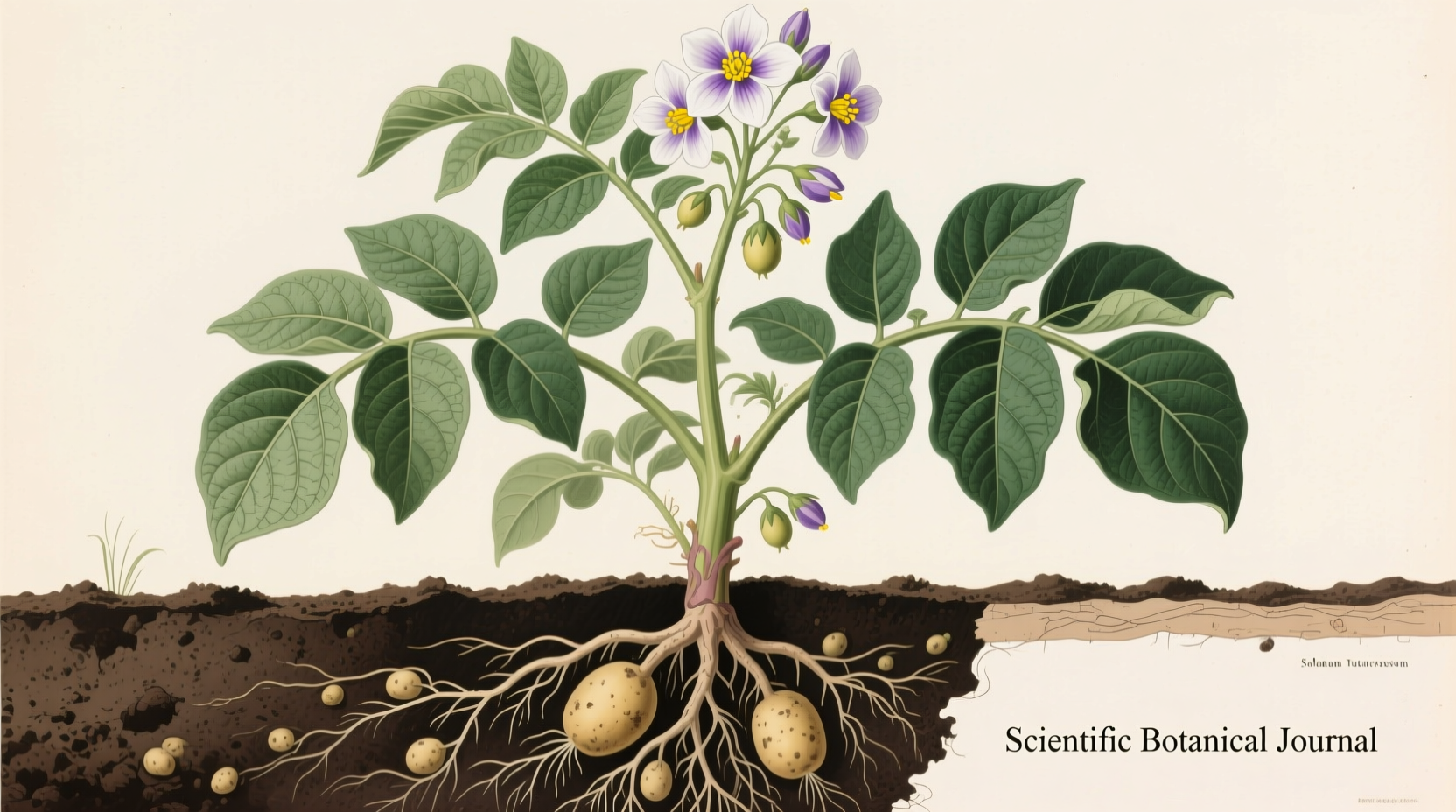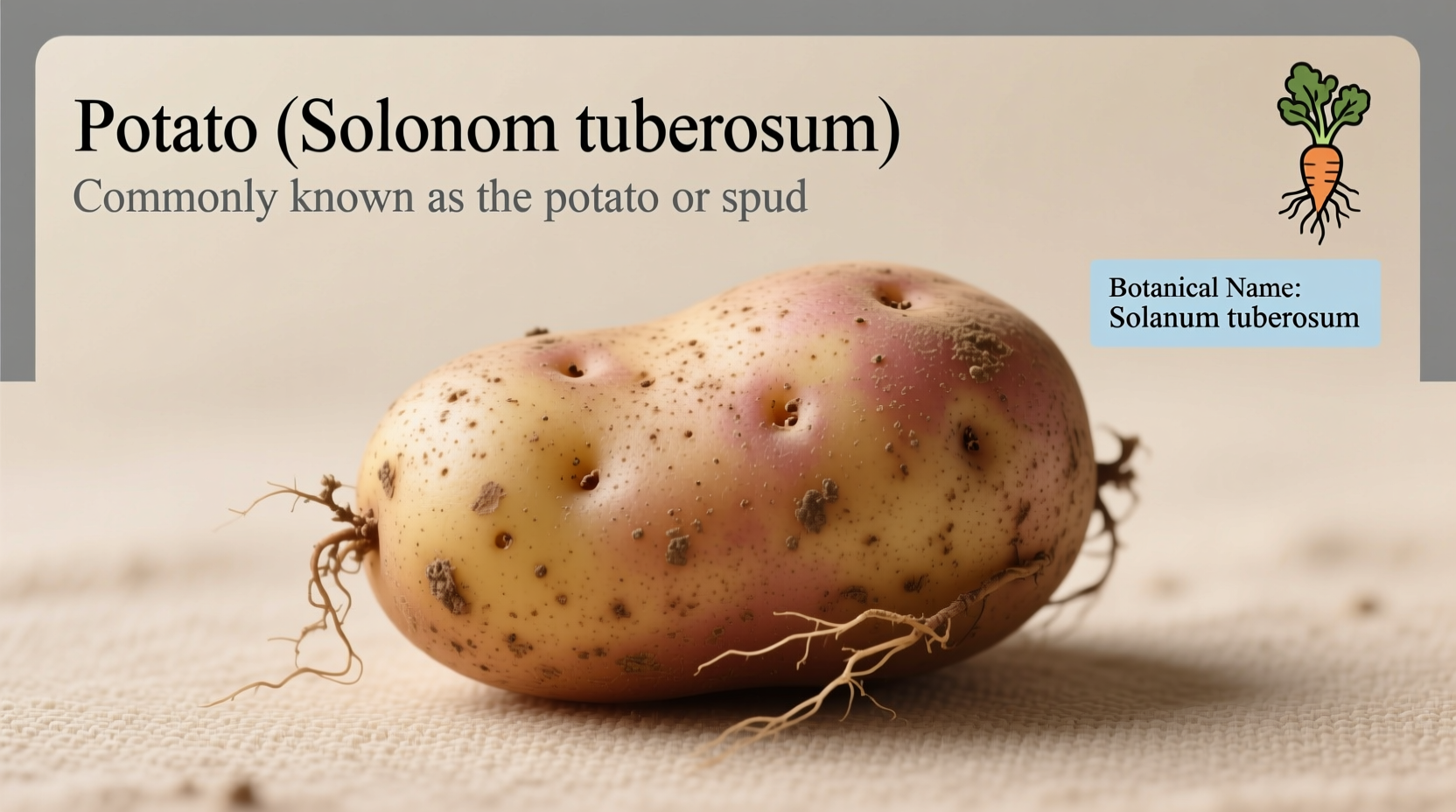The potato (Solanum tuberosum) is a starchy tuberous crop that originated in the Andes mountains of South America over 7,000 years ago. Today, it ranks as the world's fourth-largest food crop after maize, wheat, and rice, with global production exceeding 388 million metric tons annually. Potatoes provide essential nutrients including vitamin C, potassium, and dietary fiber, making them a vital food security crop for over 1.3 billion people worldwide.
Botanical Classification and Plant Characteristics
As a member of the nightshade family (Solanaceae), the potato plant shares botanical relatives with tomatoes, eggplants, and peppers. The edible portion we consume is actually a modified underground stem called a tuber, not a root vegetable as commonly believed. These tubers develop from swollen stolons (underground stems) and serve as energy storage organs for the plant.
Each potato variety contains between 15-25% starch by weight, along with varying levels of sugars, proteins, and essential amino acids. The skin contains significant concentrations of dietary fiber and antioxidants, particularly when left intact during preparation.
Historical Journey from Andes to Global Staple
Archaeological evidence confirms potato cultivation began between 8,000-5,000 BCE in modern-day southern Peru and northwestern Bolivia. Indigenous Andean civilizations developed sophisticated agricultural techniques to grow potatoes at various altitudes, creating thousands of varieties adapted to different microclimates.
Spanish conquistadors encountered potatoes in the 1530s and introduced them to Europe by 1570. Despite initial suspicion, potatoes gradually gained acceptance across Europe during the 18th century, becoming crucial for food security during famines. The Irish Potato Famine (1845-1852), caused by late blight disease (Phytophthora infestans), dramatically demonstrated the crop's global importance while causing mass starvation and emigration.
| Historical Period | Key Developments | Global Impact |
|---|---|---|
| 8,000-5,000 BCE | Domestication in Andes region | Foundation of indigenous agricultural systems |
| 1530s-1570 | Introduction to Europe | Initial resistance followed by gradual acceptance |
| 1700s | Widespread European adoption | Population growth and famine resistance |
| 1845-1852 | Irish Potato Famine | Mass starvation, emigration, and agricultural reforms |
| 20th-21st century | Global expansion and variety development | Food security for developing nations |
Nutritional Profile and Health Benefits
A medium-sized potato (150g) with skin provides approximately 110 calories, 26g of carbohydrates, 2.5g of fiber, and significant amounts of vitamin C (28% of daily value), potassium (21%), and vitamin B6 (10%). Contrary to popular belief, potatoes have a relatively low glycemic index (53-78 depending on preparation method), especially when cooled after cooking.
Research from the Harvard T.H. Chan School of Public Health indicates that potatoes prepared with minimal processing (baked, boiled, or steamed with skin) can be part of a healthy dietary pattern. The key nutritional consideration is preparation method—frying significantly increases calorie density while reducing nutritional value.

Cultivation Practices and Agricultural Significance
Modern potato cultivation follows a precise agricultural cycle beginning with seed selection. Unlike many crops, potatoes are grown from tubers rather than true seeds, ensuring genetic consistency. The Food and Agriculture Organization (FAO) reports that optimal growing conditions include cool temperatures (15-20°C), well-drained soil, and consistent moisture during tuber formation.
Commercial production typically follows this sequence:
- Seed selection and preparation (4-6 weeks before planting)
- Planting in well-prepared soil (early spring)
- Vine growth and flowering (60-90 days)
- Tuber bulking phase (critical for yield)
- Vine killing (2-3 weeks before harvest)
- Harvesting and curing (10-14 days at 10-15°C)
China currently leads global potato production at approximately 95 million metric tons annually, followed by India and Ukraine. The crop's adaptability to diverse climates makes it crucial for food security in developing regions.
Major Potato Varieties and Their Culinary Applications
Potato varieties fall into three primary categories based on starch content, each suited to different culinary applications:
- Starchy potatoes (Russet, Idaho): High starch, low moisture - ideal for baking, mashing, and frying
- Waxy potatoes (Yukon Gold, Red Bliss): Low starch, high moisture - maintain shape when boiled, perfect for salads and roasting
- All-purpose potatoes (Kennebec, Yellow Finn): Moderate starch content - versatile for multiple cooking methods
The International Potato Center in Peru maintains the world's largest collection of potato varieties, preserving over 4,000 distinct cultivars. This genetic diversity proves crucial for developing disease-resistant strains and adapting to changing climate conditions.
Global Significance and Future Challenges
As climate change impacts agricultural systems worldwide, potato researchers face significant challenges. According to the International Potato Center, rising temperatures threaten traditional growing regions while creating opportunities in previously unsuitable areas. Scientists are developing heat-tolerant varieties and more sustainable cultivation practices to maintain this vital food source.
Potatoes continue to play a critical role in global food security initiatives. The United Nations Food and Agriculture Organization recognizes potatoes as a "hidden hunger" solution due to their nutrient density and ability to grow in marginal conditions where other crops fail.











 浙公网安备
33010002000092号
浙公网安备
33010002000092号 浙B2-20120091-4
浙B2-20120091-4